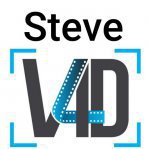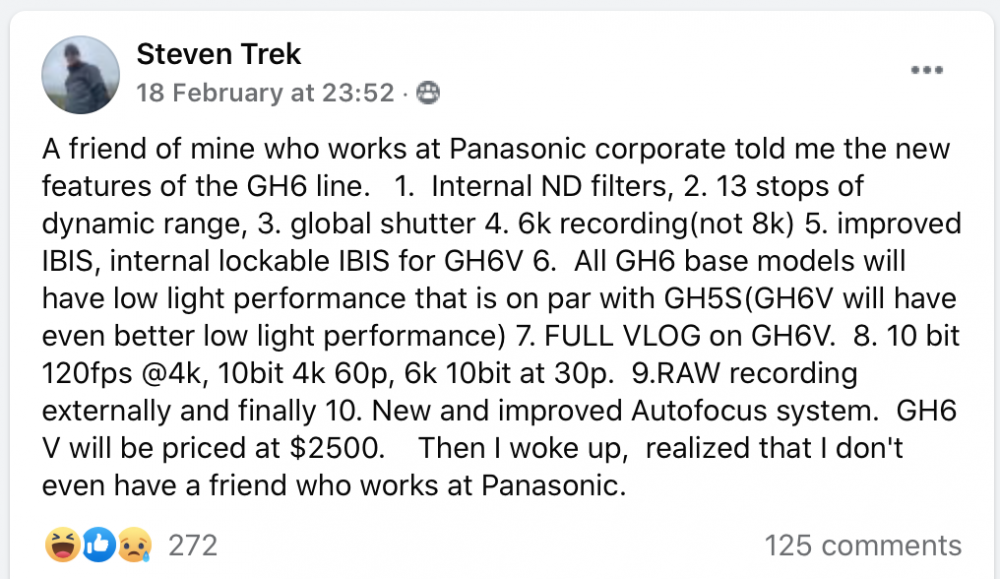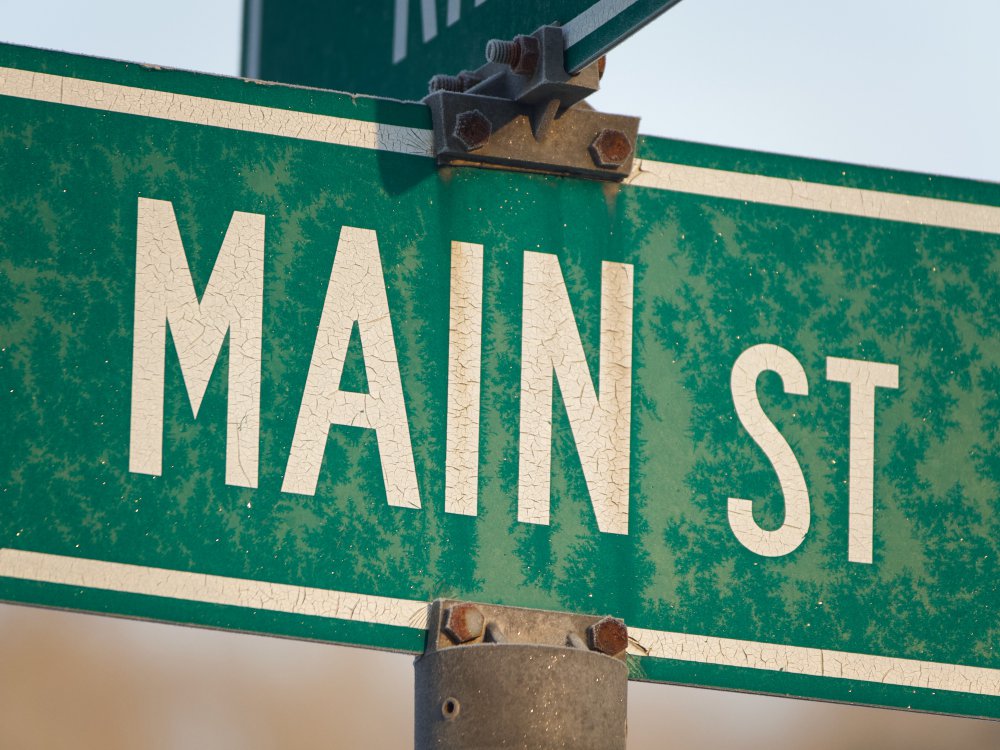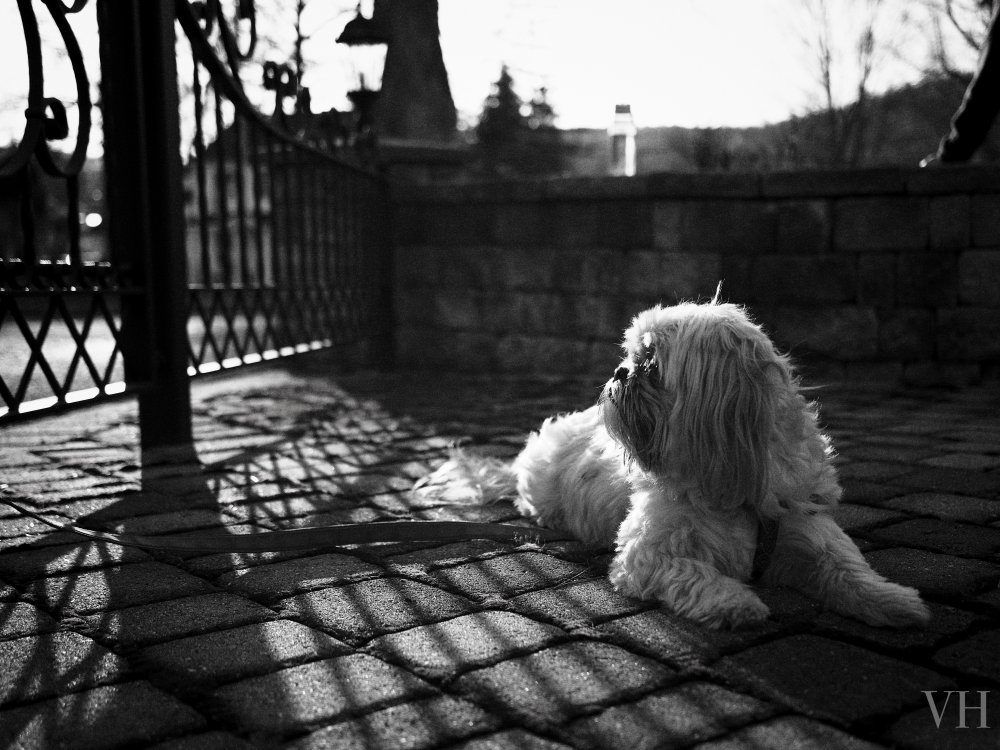Leaderboard
Popular Content
Showing content with the highest reputation on 02/20/2021 in all areas
-
I've been let down by auto focus enough on different systems to the point where I've given up on it. But that's just me I know for certain applications it can be great. In regards to the C70 there is a lot of speculation going on here from people who don't own the camera. I watched a lot of reviews and ISO 12,800 isn't pretty on it, in fact I've seen people who say they wouldn't shoot past 3200 iso with it. But its all opinion and comes down to your tolerance for noise etc.... I've been using a RED scarlet MX and find 2000 iso is perfectly usable so go figure. The dynamic range on the C70 looks great though CineD rated both the C500 and A7S3 as having more dynamic range. I personally don't care about CineD's testings though. The C70 definitely has way better shadow recovery than the A7S3, which is quite poor in the shadows despite being a 12mp sensor. Another issue with the C70 is the auto focus is lacking compared to the 1DXMK3 or the R5. It has an issue with losing focus on darker skin tones, even in normal lighting conditions. Kind of a turn off for me considering AF is a big sell on the camera. Still a great sensor none the less. Lack of RAW is a becoming a big deal to me. I've been surprised how much RAW makes difference in terms of color rendition when comparing my old ass RED Scarlet MX to my Panasonic S1. Still the RF mount, ND filters, great high frame rates, canon color, and image are big draws on the C70. The Sony does smoke it with AF performance, you also get better dynamic range past 60fps as the C70 loses its dual gain after that. The Sony is also better in low light. Of course the NR and sharpening ruin the image for me. But at the C70's price point you could get a Sony FX6, which is probably where I'd go especially considering the rolling shutter difference. Also 12 bit RAW from an Atomos is available on Sony cameras. I wonder how the latency is on using an Atomos with the FX6. I've been hearing really bad things about latency which makes external recording useless for a lot of applications. Regardless the P6K pro is an amazing option at $2500 imo. I do wish they would have went with an MFT mount, but I guess that is too niche for most of the market. People still don't get that MFT mount doesn't equal MFT sensor.2 points
-
When I was using my XT3 which my PC and Premiere hated, I 'simply' auto batch converted all the footage to Pro Res overnight, ie, didn't take me any time other than perhaps 1 minute to set it up. That way, as soon as I was ready, the next day or whenever, I could just get on with the job. No problems with the equivalent footage from my S5 however, ie, no conversion needed. I do need to get myself a laptop for next year as I will be working on the road quite a bit so looking at something M1 as it seems just the ticket.2 points
-
Panasonic GH6
Beritar and one other reacted to Video Hummus for a topic
Yes, all pictures on the PL 50-200mm (except for the dog; that one is the PL 10-25mm). PL50-200 is one of my all time favorite lenses.2 points -

Canon R1 Rumor Spec. and Camera to be launched in Yr 2021
Emanuel and one other reacted to Marcio Kabke Pinheiro for a topic
Toneh would probably exchange Chelsea for it. 🙂2 points -
Okay, but why would the quality of the BM protocols for EF lenses differ if they merely used an extra set of wiping contacts in the circuit? Furthermore, if BM bypassed the wiping contacts on the shallow mount by using a ribbon cable connector directly to the EF-mount (as I suggested), how would it adversely affect BM's existing EF protocols? The shallow mount doesn't really matter in regards to maintaining the quality of BM's EF protocols, as the contacts on the shallow mount can be bypassed, if necessary. The camera would be an EF-centric camera with a default, bolted-on EF adapter. The shallow mount merely enables one to mechanically adapt a huge variety of lenses that would not be possible with a permanent EF mount. About that, there has been a lot of discussion in this forum about "licensing" lens mounts, especially the Sony E-mount. Many insisted that Sony "would never allow" any camera manufacturer to use their mount. Lo and behold, other camera manufacturers are using the E-mount along with its electronic protocols. Here is the likely scenario that allows one manufacturer to use another manufacturer's lens mount -- you can't patent a bayonet mount. Such mounts have existed for over 100 years, and, unless you can modify it with something novel, you will probably not be able to get a utility patent. It is doubtful that one could even get a design patent on a bayonet mount, as changing the width of a tab or the throat diameter doesn't really amount to any design novelty. Furthermore, the claims would have to give very specific and precise dimensions, which would make it easy for another manufacturer to merely copy and change by a millimeter to get around such a patent. If there is anything that can be protected or licensed with a lens mount, it would be the electronic protocols, which might qualify as software or a "method." Software can be both copyrighted and patented, but I can't imagine that software IP would apply to a lens mount. If you do a search, I doubt that you will find a separate patent for the EF, RF, E, Z, M4/3 and L mounts. There might be some claims included a larger camera or lens patent that involve protocols/methods communicated through the contacts of a lens mount, but they would need to be novel in some way, which is unlikely. How does a camera manufacturer making a default adapter for EF differ from a camera manufacturer making interchangeable lens mounts for a camera? The camera would be an EF camera by default, with a hidden shallower mount. Or, the camera would merely have interchangeable lens mounts that defaulted to the EF mount/protocols. It's already been done by Red, Kinefinity, Sony and machine vision manufacturers, and enough units are being sold. I think that if they sold it with an L mount with a calibrated, solid EF adapter that is undetectable, they would have sold the same amount. Again, they could have also sold it with a shallow interchangeable lens mount system (just like Red and others) that defaulted to EF, and they would have sold the same number of cameras. BM has already release cameras with interchangeable mounts -- the system just needs to allow for shallower mounts. It's all very simple. Again, the shallow mount would not matter to the EF users, as the camera would be an EF default camera with a hidden shallow mount (or with a shallow interchangeable mount system). Sony likely can't prevent anyone from using the E bayonet mount, even if they wanted to do so.2 points
-
@TomTheDP Yes. I remember the OG Fairchild sensor being fairly bad. I believe I shot RAW at all times with my ISO set to 200. 800 or 1600? Fugget About It!! Unless you shot to ProRes, you'd get FPN in a black t-shirt, even with middle gray @ 40 IRE or whatever the fuck it was. I can personally attest to the following Blackmagic cameras having FPN, amongst a range of other issues: Cinema Camera Production Camera 4K (oh my god, what a steaming pile of ****) Pocket Cinema Camera Pocket Cinema 4K Micro Cinema Camera URSA Mini 4.6K URSA Mini Pro 4.6K But then so does the Canon C200, Sony FS700, FS5 and FS7, when shooting RAW. The closer your get to the sensor, the uglier it gets. Not a big deal usually, just need to test the fuck out of your camera before shooting anything serious. Find out the sensor flaws, find a work around or just avoid that scenario.1 point
-
Intel i7 6700 K 4GHz, 16 GB RAM Shooting S5 4k 50p 420 LGOP 200 Mbps Was shooting XT3 4k 50p 420 LGOP 200 Mbps Both h.265 I think...?1 point
-
We've already got a certain degree of that problem.... and Apple doesn't even call their own iPhone a "cinema" camera! Simply because people will point at feature films that got shot on an iPhone.1 point
-
Get any external HD recorder that you like with an SDI input. BMD Video Assist and Atomos Samurai Blade are two popular lower priced examples. (I've got the Atomos Samurai Blade)1 point
-
Aperture is controlled manually. You can lose the aperture control in some cases and not get a readout of the aperture on the camera screen. Why not use IS on the Cinema cameras? Is it a rule? Did I miss the no IS on Cinema cameras instruction in the manual. I have one IS lens which I use when I wish to handheld the camera for more travel video use on my Pocket 4K. Shooting 105mm on non IS lens isn't advised. Having paid for the camera, I feel I can use it as I like. 🤣🤣🤣 As I don't yet own the P6K Pro or a Canon camera, I can't comment on your point there. Only on my situation where I have had issues with 3 adaptors. No doubt I shall see how they perform when I get the P6K Pro and then be able to clarify if the issue is with the adaptors or not. Don't worry, I will consume humble pie if they are not found to be at fault. Maybe an adaptor would work well with the C70. I'm not ruling out adaptors in the future if required. However having had no issues with my MFT lenses and several issues with my EF lenses via the adaptors, I am biased towards non adaptors. Maybe once I've enjoyed using a S35 camera for the first time in 10 years with my S35 lenses, I will look to something like the C70 and try again with adaptors. For now, they're pissing me off too much to give it thought. Assuming they are the problem. If I'm wrong, I'll quickly tell once my P6K Pro arrives, and I'll happily concede the adaptors aren't at fault. Yes I was aware MFT lenses can be used, though rarely seen as encouraged by others. Again I'm keen to take a step away from adaptors for now. And also to invest in fullframe lenses to compliment my S35 ones for future proof. Unless the GH6 comes out soon, I don't see much future for MFT. Though I prefer S35 now certainly, fullframe may well be my future if video pushes that way. MFT won't be much use then. I don't need to use MFT lenses as I have enough EF lenses to cover my needs. My preference is informed but as always subject to new information and experiences.1 point
-
Wow so many assumptions and false conclusions in 1 post. Most of my lenses are EF-S I have had issues with adaptors. Loss of aperture at key moments. Loss of IS at key moments. This is from 3 adaptors I own for MFT mount. Not a promising start. Noting the C70 has an EF adaptor isn't endorsement of adaptors. Merely an observation. I'm not buying the C70 or its adaptor. Using MFT lenses on a S35 sensor is not something I would ever consider. Selling them maybe. Personally I still prefer S35 to fullframe. I prefer not to use adaptors if I can. My own personal preference. Sorry if this offends you.1 point
-
Blackmagic Camera Update Feb 17
tupp reacted to independent for a topic
What is it, laziness or incompetence? Watch the GU videos of the c70 and Fx6, which he compares with the a7s3. The cineD article can also be googled: "c300 iii dynamic range." Anything beyond that, you'll have to compensate me for my efforts. PM me, I'm affordable1 point -
Blackmagic Camera Update Feb 17
SteveV4D reacted to newfoundmass for a topic
That's a really foolish comparison. I am fine with AF, it's great. What I don't like is how people act as though it's a must have, especially in a cine camera. People discredit cameras because of it. It's silly. As far as your scenario, I've shot close to 100 interviews and have always used manual focus. Most productions I've worked on manually focused, too. Everyone is different, but I wouldn't depend on it.1 point -
I've been running a machine with a similar spec for a year or so, 3950X with 64G ram and a card upgrade to a 2080 Super. No experience with the S5/S1H though. I do edit H.265 files from an M2P and H.265 files from X-T3s and T4s, which are both 10-bit 420. Doing simple edits to a few clips is fine, but I find the machine gets cranky if I am really layering the H.265 files and doing color grades plus heavy effects live warp stabilizing. I agree with @fuzzynormal that proxy editing is the way to go. It's pretty simple and quick to load your batch of files into your Premiere project and then batch create proxies. If storage is an issue, you can trash all the proxies when you finish a project and just remake them if you use the footage again at a later date.1 point
-
Blackmagic Camera Update Feb 17
majoraxis reacted to Paul Jonathan for a topic
Seems like there are the first few cameras in the wild as well, in case anyone is interested: https://www.youtube.com/watch?v=aoL8OZCr9UY https://www.youtube.com/watch?v=PHt0B3kBFB8 Nothing too scientific or comprehensive yet, but in case anyone is interested to take a first look.1 point -
There are lots of interview situations that don't call for a chair, or where one isn't even possible. I, for instance, shoot mainly doc-style pieces for environmental nonprofits as a solo shooter, which means 70-85 percent of my works happens outdoors, in the field. Thus, standing interviews are a must almost all the time for me. And even if you tell someone to stand on a mark and not move their body too much, most of them are going to move in some way or another as you get deep into the interview, especially if you get them comfortable with the camera and really into what they are talking about. And if possible, I'm running two cameras in these interviews, so I can cut between different angles to add interest to the piece and hide cuts that would be obvious I only had one camera angle. If you are trying to get non-pro subjects to say scripted lines, I find you're going to get a pretty wooden delivery most of the time, no matter if your subject is sitting or standing. As a former journalist, in my experience I get much better results if I do a traditional interview and get my subjects really talking about the topic at hand, even if I have some very clear bullet points of information I need them to say. I find getting people comfortable enough with the camera that they forget in the moment that it's rolling is key to getting an good clip. People getting animated and moving around a bit and talking with their hands gives me the most impactful interview material. Basically, if I can film interviews that feel like the subject is just talking to someone (off camera) with all the normal ticks and motions and conversational gestures people expect in a real conversation, the end result is many times better than having someone say scripted lines to the camera. And there are lots of times in doc work where you want to see your subject moving around while talking. It doesn't have to be an interview necessarily; you might want your subject inspecting a logging site or in a burnt-out forest and talking about what they see, or walking along a river that's the subject of your piece telling a story that is relevant to your video. Or maybe you want your subject talking while driving or riding in a car to an important destination, or through a critical scene. Or you might be recording a protest or town hall meeting or some other live event where you can't direct who is speaking or how they are moving. In all of these situations, having really good AF-C, especially with face tracking, can be extremely helpful for a single shooter or a small crew without a dedicated focus-puller. And none of them has anything to do with what a pack of self-referential YouTubers recommend or another dreadful blog about someone making coffee or riding a One Wheel around Toronto or LA. They are real-world situations that professional shooters encounter every day. If they are not situations you shoot in, great. But it would be silly to discount them. Is perfect autofocus a must? No. I do a lot of manual focus in these situations. But solid autofocus is a valuable tool that shooters like me want access to. It definite factors into my camera buying decisions. It's not the only factor I consider, but I'd probably rate it higher than a lot of other features such as RAW shooting or open gate/true anamorphic modes. It just comes down to what each individual shooter prioritizes in their work. In the end, none of the cameras out today are perfect, but it's awesome that we have so many choices and so many key features and jumps in quality are filtering down to sub-$10K and even sub-$5K cameras.1 point
-
Blackmagic Camera Update Feb 17
majoraxis reacted to Paul Jonathan for a topic
This AF and IBIS question always pops up with BMD and is starting to feel redundant. I don't think it will ever happen in a Blackmagic Camera for the following reasons: - Blackmagic is cine-oriented towards workflows where these features are not needed - IBIS and internal NDs are largely incompatible, BMD has chosen the latter - Good AF requires a large amount of R&D, patents and/or licensing - BMD neither has the patents nor have they shown any interest to pay for licensing - this is to keep their products cheap. This is a perfect summary of the subject and it actually made laugh, because it's so simple and to the point. May I add to that. Many cameras have good autofocus. Many cameras have not. This one doesn't and won't unless there are rapid technological advances (LIDAR or similar) and BMD decides to incorporate them.1 point -

PC upgrade for native h265 editing
Emanuel reacted to fuzzynormal for a topic
So I'm a big proponent of proxy editing and use it on huge documentary edits. You say transcoding isn't part of your desired workflow. Any particular reason why you're dismissing this option and giving yourself a cheap and easy way to cut?1 point -
Blackmagic Camera Update Feb 17
tupp reacted to independent for a topic
Well, you didn't click on the link that I posted, which would take you exactly to the iso tests. So that tells me you're lazy, and I did all that work for nothing. Pay me!1 point -

Flip-Out Screen Cameras On A Gimbal???
Mark Romero 2 reacted to Trek of Joy for a topic
Same as others, I use the flip out screen on the Weebill S all the time. Its tougher to see against the back of the camera IMO. I find shooting with the tilt LCD on the a73 more of a pain and with larger lenses like a 24-70 its really tight against the rear motor since you have to slide the camera back a bit. I don't have any counterweights to help in that regard. I shoot a lot of underslung and waist height stuff too, got a cheap/light CF handle from B&H that lives on the upper mount so I can leave the tripod handle on the bottom. Between the EOS R and now the a7s3, can't say I remember the flip out LCD ever banging into anything. Chris1 point -
No, ProRes is limited to 4K crop. To get 6K you need to use BRAW. Just like the original Pocket 6K. It's a limitation, but for me a minor one. The URSA 12K to my knowledge only records on BRAW. I guess we are not yet in the position to have that sensor which can do full sensor lower resolution such as 8K and 4K in a Pocket size body.1 point
-
Panasonic GH6
Rinad Amir reacted to Video Hummus for a topic
Panasonic should release a S5S (lol) with Sony's 12MP sensor in A7SIII but without a mechanical shutter and a internal ND solution. Throw in some kind of internal RAW of some kind and it will be attractive vs A7SIII even without Sony level AF. With a good telephoto it can take great pictures. But, I agree. Panasonic should make a future video centric camera more like a FX3 than the GH5S.1 point -
Video set-up (camera + lens) around $1000?
thehebrewhammer reacted to barefoot_dp for a topic
I'd steer them towards either a C100 or an FS700. Either of those cameras are a steal for the prices they go for. They'll save money on audio and ND filters because it's all built in. And they'll learn how to use all of that stuff properly with minimal fuss. FS700 is more versatile with lots of frame rates, option to record 4K externally, etc. Canon has a better "straight out of the box" colour profile but is limited to 24/25/30fps @ 1080p. C100 also has auto-focus if it's had the firmware update, but learning to focus manually is best for any cam. If they're going the budget route then a lens adapter for the FS700 would be a good idea, either to use electronic EF lenses or old manual primes (m42, Nikon, etc), as native E mount lenses might blow their budget out pretty quick.1 point -
There is absolutely no hassle in what I am proposing. The clueless EF users would never realize that they are using an adapter. Well, firstly, shallow interchangeable mounts have a proven track record on several cameras. For instance, Red cameras have interchangeable lens mounts, and most who get one with an EF mount probably never remove the mount (and likely aren't even aware of that possibility). Likewise with the FZ mount, the Kinefinity mount, the AJA Cion mount and with countless machine vision cameras that have bolt-on mounts. Heck, Wooden Camera made modified BMPC's with an interchangeable, bolt-on mount. Have you heard any complaints about mechanical failure of any such configurations? Secondly, if a camera is designed with an existing shallow mount (EF-M, Z, M4/3, L, E, RF, etc.), the EF adapter can incorporate a flange so that it additionally bolts onto the body at four points, with the design following the lines of the camera body -- looking just like the front of the original Ursa, for instance. Such an arrangement will never budge unless one uses a wrench. If the camera comes configured that way out of the factory, EF users will never know that the camera actually has a shallow mount hidden inside. Thirdly, in regards to "software" failure (I assume that you mean "lens signal failure"), the above established cameras with interchangeable electronic mounts have successfully eliminated any such problem, and there absolutely is no reason why it cannot be the same when utilizing an established shallow lens mount. If contact reliability is a huge concern, a manufacturer could always use a separate ribbon connector for the default EF mount, bypassing the contacts of the shallow lens mount. However, these are dumb simple design/mechanical solutions to a problem that is essentially imaginary. Is it correct to sacrifice whole worlds of lens choices for a cinematography camera, merely to avoid the possibility of a few momentarily confused EF users? Additionally, more and more popular cameras are appearing with FF shallow mounts. Are the clueless (yet successful) EF users going to ignore the C70 and other Canon R-mount offerings because it's too confusing to use their L glass with an official Canon EF-to-R adapter?:1 point
-
The ginormous photosites of the 12MP FF sensor might also contribute a smidge to the low noise of the A7S III. Will have to take your word for it that the C70 has greater dynamic range, but can the C70 shoot at 12,800 iso clean like the A7S III? Also, isn't the C70 a Super35 camera? By the way, there are HDR/dual-iso cameras that have a greater capture dynamic range than any Alexa. Of course, that doesn't mean that such cameras produce a better image than an Alexa. Oh, I am never sarcastic! Seriously, it's perplexing as to why BM continues to choose the EF mount on their Super35 cameras over an existing shallow mount (EF-M, Z, M4/3, L, E, RF, etc.) or over simply incorporating a shallow flange for interchangeable mounts. Having a shallow mount (or a shallow interchangeable mount system) does not preclude easy use by EF users nor does it prohibit "built-in" NDs for such users. BM can merely make a "default" EF adapter (or interchangeable mount) with NDs that follows the design lines of the camera, and the clueless EF users will never know that they are actually shooting through an adapter (or through an interchangeable lens mount). "Intro" students should probably use a lower-end camera. Once those students graduate to using actual cinema cameras, then they definitely should learn about using front filters, batteries, follow focus, monitors, mics, etc.1 point
-
I am guessing it also is trying to appeal to people obsessed with noise and clean images. Being good in "low light" is a selling point these days among the low budget/prosumer market. Otherwise you'll get a million people asking why their footage looks so noisy.1 point
-
I don't know anyone who's had a problem with them and it seems like everyone and their brother has one around where I live. I've heard of faulty cameras with every manufacturer.1 point
-

Panasonic GH6
IronFilm reacted to Marcio Kabke Pinheiro for a topic
Well, Panasonic was working on something: https://www.theverge.com/2021/2/18/22289331/panasonic-farting-cat-robot1 point -
What type of work do you do? Not trying to question your legitimacy or anything just curious. It is pretty crazy how far compressed codecs have come but yeah won't cut it for every job. I wish 12 bit codecs would become a standard in cameras tho. Panasonic has always impressed me with the image they put out for the price.1 point
-
What do Pocket to Alexa luts have to do with the cameras dynamic range? Those type of luts are pretty useful if you are trying to match the two cameras or if you just want better color without a lot of work. Juan Melara and GHAlex do great work with their color conversions. Honestly for the price it is like a Jesus camera. What else comes close to this anywhere near the $2500 price range, at least in terms of image quality.1 point
-
It's odd that my learning process isn't quite as riddled with confusion as yours. Yes I bought some items I ended up not needed. That is normal and had nothing to do with misleading advertising or comments on the Web. It's just that what sounded good in theory didn't work for me in practise. Or maybe it didn't fit my way of working. No one but me will know that, so there was nothing anyone else could say or do to change that. It was my mistake to make and to take ownership of. I don't blame others for it. Again if I or Panasonic described the GH4 as a handheld camera, I doubt I'd hear a peep from you. Assign the same term to another camera brand and its suddenly a bone of contention. Would you describe the GH5s as handheld? If Blackmagic advertised that you could film stable footage handheld, then yes, it is misleading advertising. Describing it as handheld, just means it's small enough to be held in one's hand whilst working with it. In this case, it is true. As born out my those of us who do so. To me the Pocket cameras are handheld tools in the same way my GH4 cameras are and my GH5s. I can hold and operate them entirely with my hands, without any additional straps or support. Therefore Blackmagic isn't being misleading. They even have a handgrip....1 point
-

Most fun rig or piece of equipment?
leslie reacted to pixelpreaching for a topic
It's truly a phenomenal lens, though for very specific needs. But if you have those needs, there's nothing else remotely comparable. I just got a DJI OM4 gimbal, it's AWESOME. That + the Moment anamorphic adapter and iPhone 11 make for a very cool combo. I recently got a DJI Mavic 2 Pro and it's a stunning piece of equipment for photos and video. Hasselblad colors are the best out there.1 point -
Panasonic GH6
Juank reacted to Origami101 for a topic
I'll go further and say there should be a future for M4/3 but might not since Panasonic's backed themselves into a strategic corner. To start with, why should M4/3 hang around? Well, aside from the obvious benefits that it generally yields smaller and lighter camera kits —especially for telephoto—has sufficient image quality for both stills and video and is broadly supported, there’s two other distinct advantages. The first is, for any given sensor generation, a M4/3 sensor will read data off faster. This is where I think the traditional camera makers have gotten lost. Did the stunning jumps in iPhone image quality come from bigger sensors? They’ve gotten marginally larger, but no. The jumps have come from throwing massive amounts of computational power at the data, which means reading it as fast as you can. Blown highlights? Merge multiple exposures. Terrible low-light performance? Same! But with different algorithms. Excessive depth of field? Depth map! A smaller, but still sufficient, sensor like M4/3 fits the computational imaging paradigm better. And as a bonus, they’ll also hold an edge in IBIS, heat generation, and battery drain due to the smaller size and mass. The second is smaller sensors—or more accurately, smaller image circles—have distinct theoretical advantages for lens design. I don’t pretend to understand the theory, though I do know the complexity of making lens elements increases with the cube of its diameter, so all things equal you should get better, smaller, or cheaper lenses for M4/3 for any given field of view versus larger formats. Which leads to the tragedy of Panasonic going the L mount route (in the dumb business decision sense, not Romeo and Juliette). I get the rationale of wanting to consolidate their cinema and Lumix lines on one mount, and the logic m4/3 was too small for the former. The problem was they picked a sensor size, 135 format, putting them in direct competition with Sony and Canon, who offered, or were inevitably going to offer, soup to nuts mirrorless solutions, picked a mount designed for APS-C, and stranded their entire current user base. Heck of a job, guys. Worse, since L mount is now their halo product, they’ll be loathe to undercut it by offering better features on m4/3, even if they’re technically feasible. So a GH6 that substantially outperforms the S1 or S1H? Probably not going to happen, even if S series sales continually underperform. But I would love to be proved wrong.1 point -
Flip-Out Screen Cameras On A Gimbal???
Mark Romero 2 reacted to gt3rs for a topic
I use only with the screen flipped out, it is the whole point of have having a screen that flips out that helps on gimbal tremendously. Before I was using an external monitor as anything not eye level would be a pain. You should balance the camera with already the screen flipped out. I never hit the screen to the gimbal so far, but a bit of risk is there but only in extreme conditions....1 point -
Flip-Out Screen Cameras On A Gimbal???
Mark Romero 2 reacted to scotchtape for a topic
Yes the screen is flipped out, the entire point is so you can use it at different angles. Also helps with heat management. Even with tilt screens I extend the screen if possible because of thermals. Of course it does make it more vulnerable to damage, which is why you treat it carefully. That being said, I can't imagine a regular useage scenario with the gimbal on, where you would hit the screen on the motors. You would have to be at some really weird angle and at that point if you don't know gimbals might wig out it's 💯 user error. There are no rules. Keep it against the body if you want.1 point -
Flip-Out Screen Cameras On A Gimbal???
Mark Romero 2 reacted to UncleBobsPhotography for a topic
I use the screen flipped out with the Weebill Lab and the GH5 and I haven't had any problems balancing it with M43 lenses. The S5 is smaller and lighter than the GH5, so I would guess that it works, at least as long as you don't use the heavier lenses. I can't get the GH5 balanced if I use it with a speedbooster and Canon L glass.1 point -
8Nothing wrong in wishing for AF. Nothing wrong in wishing to win a million pounds in a lottery. And Blackmagic giving us brilliant AF is as likely on my opinion. I'd rather they focus their efforts in improving quality control first before attempting things like AF, which Panasonic still has failed to deliver on after a decade of hybrid cameras. Is there anything to suggest if Blackmagic had attempted AF, it would be any better than Panasonic. Poor AF can be worse than no AF. The GH5 has some AF and I would find myself lazily relying on it because 8 or 9 times out of 10, it would work for me. The problem is that time when it didn't and the image would shift badly out of focus. Often at the worst moment. Not having AF has meant I must rely on manual focus and whilst this can lead to issues with missed focus, it's less obvious than a total out of focus moment that catches you off guard. Also I find my manual focus skills improve from practise and thanks to Blackmagics large screen and punch in focus, manual focus is a lot better than the GH5. Yes, an AF as good as Canon and Sony would be lovely. But is it possible? Can Blackmagic borrow PDAF from Canon and impliment it just as well? If not, then its a dream wish no different than one winning the lottery. At the end of the day, if you need reliable AF buy Canon or Sony.0 points
-
I think it is a combination of a biased interpretation of one's own link, plus poor comprehension of another somewhat misleading source. I already addressed the Gerald Undone video that you linked. I disagree with the conclusions to which he jumps in regards to dynamic range. He sets up arbitrary conditions (the size of the C70's sensor and the lack of NR options on the A7S III) for which the C70's dynamic range is "better" in his mind than the A7S III. However, at 09:52 in the video, he additionally states that the low light performance of the A7S III is far superior to that of the C70: While he makes this statement, we see a side-by-side comparison of the performance of the C70 and the A7S III starting at iso 12800 and 25600, which reveals that the A7S III is exceptionally cleaner than the noisy C70. So much for the CVP and "GU" links. The C70 is not "clean" at 12,800 iso, unlike the A7S III. I see. Well, once again, I would have to take your word on that, but after seeing the discrepancy between your statements and your links, I don't think that I will.-1 points
-
lol @ the "pro" moniker, BMD slipping, they're letting their media people name shit: No SDI, only unreliable HMDI No wifi video, no 3rd party/1st party module for wireless video No locking lens mount No interchangeable lens mounts No recorder slot for SSD/nvme media, only unreliable USB-C Very cool. Photo body (fuck ergonomic ENG/camcorder designs) with a tilt screen and shitty NDs. I'm glad we're getting these iterative changes, moar products pls! I love when BMD stretches their staff thin, so we get less firmware fixes and improvements. And more products means more parts to house. So when your camera dies like a year after warranty, Blackmagic will tell you SOoL, we no repair.-1 points












